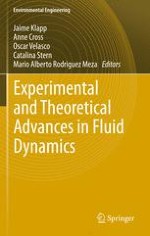The book is comprised of lectures and selected contributions presented at the Enzo Levi and XVI Annual Meeting of the Fluid Dynamic Division of the Mexican Physical Society in 2010. It is aimed at fourth year undergraduate and graduate students, as well as scientists in the fields of physics, engineering and chemistry with an interest in fluid dynamics from the experimental and theoretical point of view. The lectures are introductory and avoid the use of complicated mathematics. The other selected contributions are also geared to fourth year undergraduate and graduate students. The fluid dynamics applications include multiphase flow, convection, diffusion, heat transfer, rheology, granular material, viscous flow, porous media flow, geophysics and astrophysics. The material contained in the book includes recent advances in experimental and theoretical fluid dynamics and will be of great use to those involved in either teaching and/or research.
